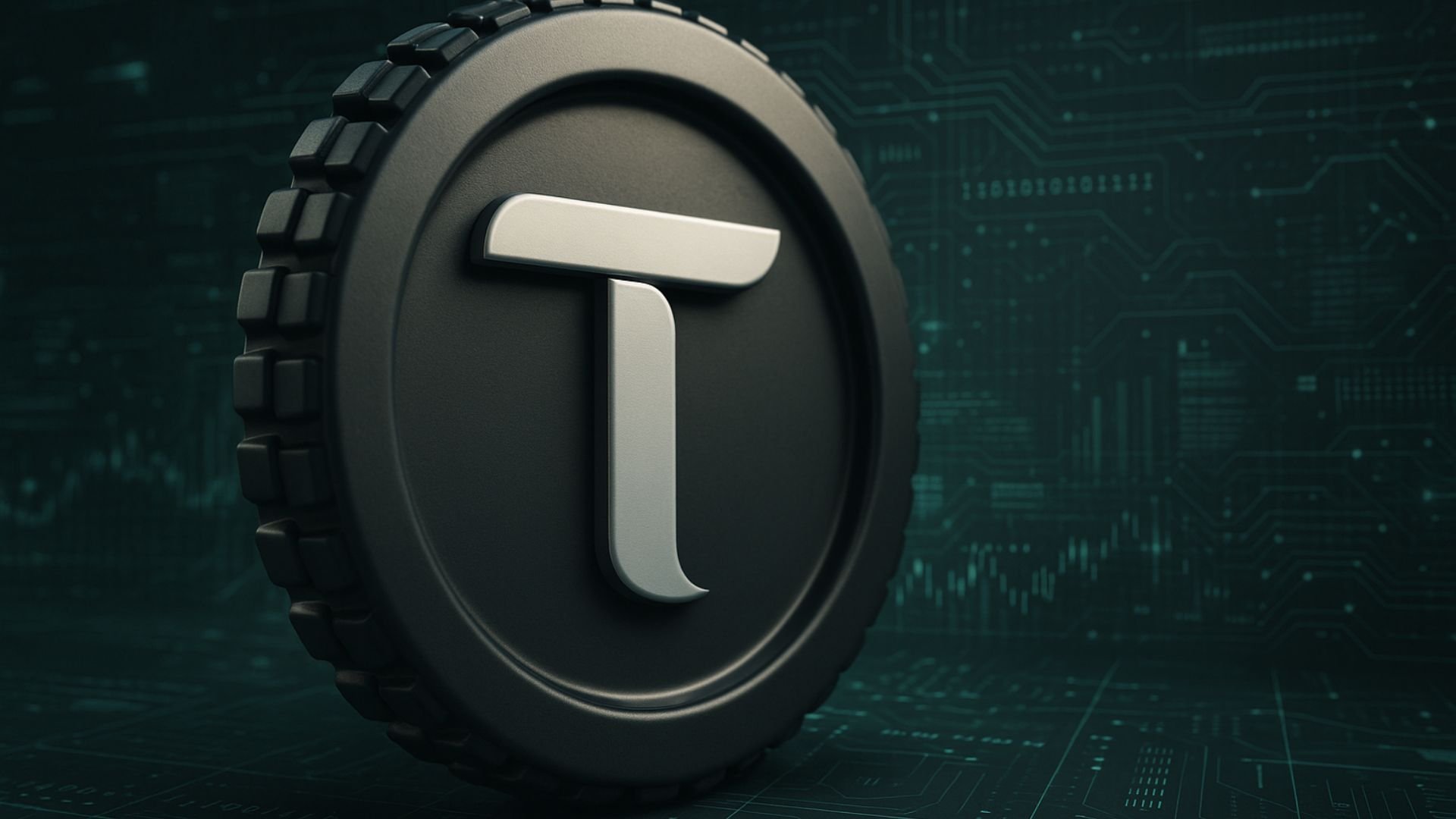GENIUS Act Pass Spurs Bitwise CIO’s $2.5T Crypto Boom Forecast

Key Takeaways:
- The GENIUS Act could funnel $30 trillion into crypto by bridging traditional finance and blockchain.
- Bipartisan support indicates stablecoins as a U.S. policy priority, easing regulatory uncertainty.
- Ethereum and Solana may surge as regulated stablecoins drive institutional DeFi adoption.
The U.S. Senate ignited crypto’s future on May 19, as they voted 66-32 to pass the GENIUS Act—a bipartisan stablecoin bill hailed by Bitwise’s Matt Hougan as the potential catalyst for a “multi-year crypto bull market.”
The legislation, which earned rare cross-party support, now moves to final amendments and a decisive vote.
Can the GENIUS Act Spark a $2.5T Stablecoin Surge?
Hougan likened the bill’s importance to “Wall Street and crypto getting married,” arguing it represents the most consequential regulatory milestone since the launch of spot Bitcoin ETFs in January 2024.
The Bitwise CIO added in a newsletter statement “the stage for a long term sustained rally in crypto assets beyond Bitcoin, is set”, naming Ethereum (ETH), Solana (SOL), and DeFi tokens like Uniswap (UNI) and Aave (AAVE) as potential top beneficiaries.
The GENIUS Act mandates stablecoin issuers to fully back tokens with the U.S. Treasury or dollar equivalents, enforcing anti-money-laundering rules, and registering with federal regulators.
Stablecoin issuers exceeding $50 billion in market cap must undergo annual audits. Additionally, foreign stablecoin operators will face stringent oversight to “ensure U.S. dollar dominance,” according to Republican Senator Bill Hagerty, a key architect of the bill.
Hougan predicts the legislation will legitimize the use of stablecoins in mainstream finance and transform the $236 billion stablecoin market into a $2.5 trillion sector.
Critics, including Democratic Senator Elizabeth Warren, warned the bill could allow a de facto central bank digital currency and overlook conflicts of interest, noting President Donald Trump’s ties to the USD1 stablecoin issuer.
However, Hougan argues that the bill’s true impact lies in normalizing blockchain-based transactions, paving the way for trillions in stocks, bonds, and assets to migrate to crypto networks.
“Once dollars move seamlessly on-chain, other financial instruments will follow,” Hougan said. “This is the thesis for Ethereum and Solana, and it’s just the beginning.”
“Imagine JPMorgan issuing stablecoins, Amazon offering discounts for crypto payments, and stablecoins becoming as common as Venmo,” the Bitwise CIO explained further in his address.
If finalized, the GENIUS Act could take effect by summer, marking the first comprehensive federal crypto law in U.S. history.
Why Did 16 Democrats Flip on Crypto Regulation?
U.S. Senators initially voted 49-48 to reject the revised GENIUS Act. The bill, which was backed by Republican Senators Bill Hagerty, Cynthia Lummis, Tim Scott, and John Thune, has been in the works for months, building anticipation as lawmakers sought a clear regulatory path for digital assets.
Despite early support from both sides of the Senate, momentum fell as national security concerns and heavy criticism of the bill were voiced by Democrats.
Treasury Secretary Scott Bessent criticized the outcome as a missed opportunity to reinforce U.S. dollar dominance, while Senator Lummis called the rejection a “step backward” for crypto innovation.
Nonetheless, swift pressure from lawmakers and crypto founders who supported the bill spurred a second vote.
Although the bill has now been advanced, it resulted from days of behind-the-scenes negotiations and clarifications between senators of both parties, including 16 Democrats reversing prior opposition.
These discussions helped shape the latest variation and could still influence future reform of stablecoin legislation.
Is Bitcoin’s $200K Target Tied to Stablecoin Growth?
In late March, Bitwise CIO Matthew Hougan predicted that Bitcoin could break through the $200,000 psychological level before the end of 2025, driven by key shifts such as accelerating adoption by institutions and governments.
Hougan emphasized that earlier rallies lacked government participation, a huge difference this time due to the inclusion of sovereign wealth.
“The final barrier fell when governments became holders,” he stated. “Bitcoin’s survival was no longer in doubt; growth became the focus.”
His forecast echoes similar 2024 bold predictions from other industry experts about the world’s leading cryptocurrency.
Over 70 corporations, including Tesla and MicroStrategy, have added Bitcoin to their balance sheets, while Wall Street titans like BlackRock and Fidelity have also entered the crypto arena.
Though Hougan admitted that regulatory ambiguities and market volatility are short-term risks, he dismissed them as temporary hurdles, stressing Bitcoin’s evolution into an institutional mainstay.
Reinforcing his outlook during a panel session, the Bitwise CIO added, “95% of all Bitcoin is already owned, and 95% of investable money doesn’t own any Bitcoin.”
He argued that substantial price increases are inevitable with $30 trillion in investable capital targeting a limited supply of Bitcoin.
Frequently Asked Questions (FAQs)
By enforcing U.S. dollar-backed stablecoins, the GENIUS Act could pressure nations like China or the EU to fast-track their own digital currency systems to avoid dollar dominance.
Regulated stablecoins may drive institutional capital into DeFi, but compliance demands could force platforms to censor transactions or adopt KYC rules, clashing with decentralization ideals.
Bitcoin maximalists will likely reject regulated stablecoins as centralized intrusions, doubling down on BTC’s decentralized purity. However, some may pragmatically use them for trading while maintaining ideological opposition to their adoption.
The post GENIUS Act Pass Spurs Bitwise CIO’s $2.5T Crypto Boom Forecast appeared first on Cryptonews.
Read More

Ethereum Pushes Past $4.2K, But Can It Break the $4.7K Wall?
GENIUS Act Pass Spurs Bitwise CIO’s $2.5T Crypto Boom Forecast

Key Takeaways:
- The GENIUS Act could funnel $30 trillion into crypto by bridging traditional finance and blockchain.
- Bipartisan support indicates stablecoins as a U.S. policy priority, easing regulatory uncertainty.
- Ethereum and Solana may surge as regulated stablecoins drive institutional DeFi adoption.
The U.S. Senate ignited crypto’s future on May 19, as they voted 66-32 to pass the GENIUS Act—a bipartisan stablecoin bill hailed by Bitwise’s Matt Hougan as the potential catalyst for a “multi-year crypto bull market.”
The legislation, which earned rare cross-party support, now moves to final amendments and a decisive vote.
Can the GENIUS Act Spark a $2.5T Stablecoin Surge?
Hougan likened the bill’s importance to “Wall Street and crypto getting married,” arguing it represents the most consequential regulatory milestone since the launch of spot Bitcoin ETFs in January 2024.
The Bitwise CIO added in a newsletter statement “the stage for a long term sustained rally in crypto assets beyond Bitcoin, is set”, naming Ethereum (ETH), Solana (SOL), and DeFi tokens like Uniswap (UNI) and Aave (AAVE) as potential top beneficiaries.
The GENIUS Act mandates stablecoin issuers to fully back tokens with the U.S. Treasury or dollar equivalents, enforcing anti-money-laundering rules, and registering with federal regulators.
Stablecoin issuers exceeding $50 billion in market cap must undergo annual audits. Additionally, foreign stablecoin operators will face stringent oversight to “ensure U.S. dollar dominance,” according to Republican Senator Bill Hagerty, a key architect of the bill.
Hougan predicts the legislation will legitimize the use of stablecoins in mainstream finance and transform the $236 billion stablecoin market into a $2.5 trillion sector.
Critics, including Democratic Senator Elizabeth Warren, warned the bill could allow a de facto central bank digital currency and overlook conflicts of interest, noting President Donald Trump’s ties to the USD1 stablecoin issuer.
However, Hougan argues that the bill’s true impact lies in normalizing blockchain-based transactions, paving the way for trillions in stocks, bonds, and assets to migrate to crypto networks.
“Once dollars move seamlessly on-chain, other financial instruments will follow,” Hougan said. “This is the thesis for Ethereum and Solana, and it’s just the beginning.”
“Imagine JPMorgan issuing stablecoins, Amazon offering discounts for crypto payments, and stablecoins becoming as common as Venmo,” the Bitwise CIO explained further in his address.
If finalized, the GENIUS Act could take effect by summer, marking the first comprehensive federal crypto law in U.S. history.
Why Did 16 Democrats Flip on Crypto Regulation?
U.S. Senators initially voted 49-48 to reject the revised GENIUS Act. The bill, which was backed by Republican Senators Bill Hagerty, Cynthia Lummis, Tim Scott, and John Thune, has been in the works for months, building anticipation as lawmakers sought a clear regulatory path for digital assets.
Despite early support from both sides of the Senate, momentum fell as national security concerns and heavy criticism of the bill were voiced by Democrats.
Treasury Secretary Scott Bessent criticized the outcome as a missed opportunity to reinforce U.S. dollar dominance, while Senator Lummis called the rejection a “step backward” for crypto innovation.
Nonetheless, swift pressure from lawmakers and crypto founders who supported the bill spurred a second vote.
Although the bill has now been advanced, it resulted from days of behind-the-scenes negotiations and clarifications between senators of both parties, including 16 Democrats reversing prior opposition.
These discussions helped shape the latest variation and could still influence future reform of stablecoin legislation.
Is Bitcoin’s $200K Target Tied to Stablecoin Growth?
In late March, Bitwise CIO Matthew Hougan predicted that Bitcoin could break through the $200,000 psychological level before the end of 2025, driven by key shifts such as accelerating adoption by institutions and governments.
Hougan emphasized that earlier rallies lacked government participation, a huge difference this time due to the inclusion of sovereign wealth.
“The final barrier fell when governments became holders,” he stated. “Bitcoin’s survival was no longer in doubt; growth became the focus.”
His forecast echoes similar 2024 bold predictions from other industry experts about the world’s leading cryptocurrency.
Over 70 corporations, including Tesla and MicroStrategy, have added Bitcoin to their balance sheets, while Wall Street titans like BlackRock and Fidelity have also entered the crypto arena.
Though Hougan admitted that regulatory ambiguities and market volatility are short-term risks, he dismissed them as temporary hurdles, stressing Bitcoin’s evolution into an institutional mainstay.
Reinforcing his outlook during a panel session, the Bitwise CIO added, “95% of all Bitcoin is already owned, and 95% of investable money doesn’t own any Bitcoin.”
He argued that substantial price increases are inevitable with $30 trillion in investable capital targeting a limited supply of Bitcoin.
Frequently Asked Questions (FAQs)
By enforcing U.S. dollar-backed stablecoins, the GENIUS Act could pressure nations like China or the EU to fast-track their own digital currency systems to avoid dollar dominance.
Regulated stablecoins may drive institutional capital into DeFi, but compliance demands could force platforms to censor transactions or adopt KYC rules, clashing with decentralization ideals.
Bitcoin maximalists will likely reject regulated stablecoins as centralized intrusions, doubling down on BTC’s decentralized purity. However, some may pragmatically use them for trading while maintaining ideological opposition to their adoption.
The post GENIUS Act Pass Spurs Bitwise CIO’s $2.5T Crypto Boom Forecast appeared first on Cryptonews.
Read More

 BULLISH: Bitwise CIO Matt Hougan says, "95% of all Bitcoin is already owned and 95% of investable money doesn't own any Bitcoin."
BULLISH: Bitwise CIO Matt Hougan says, "95% of all Bitcoin is already owned and 95% of investable money doesn't own any Bitcoin."
